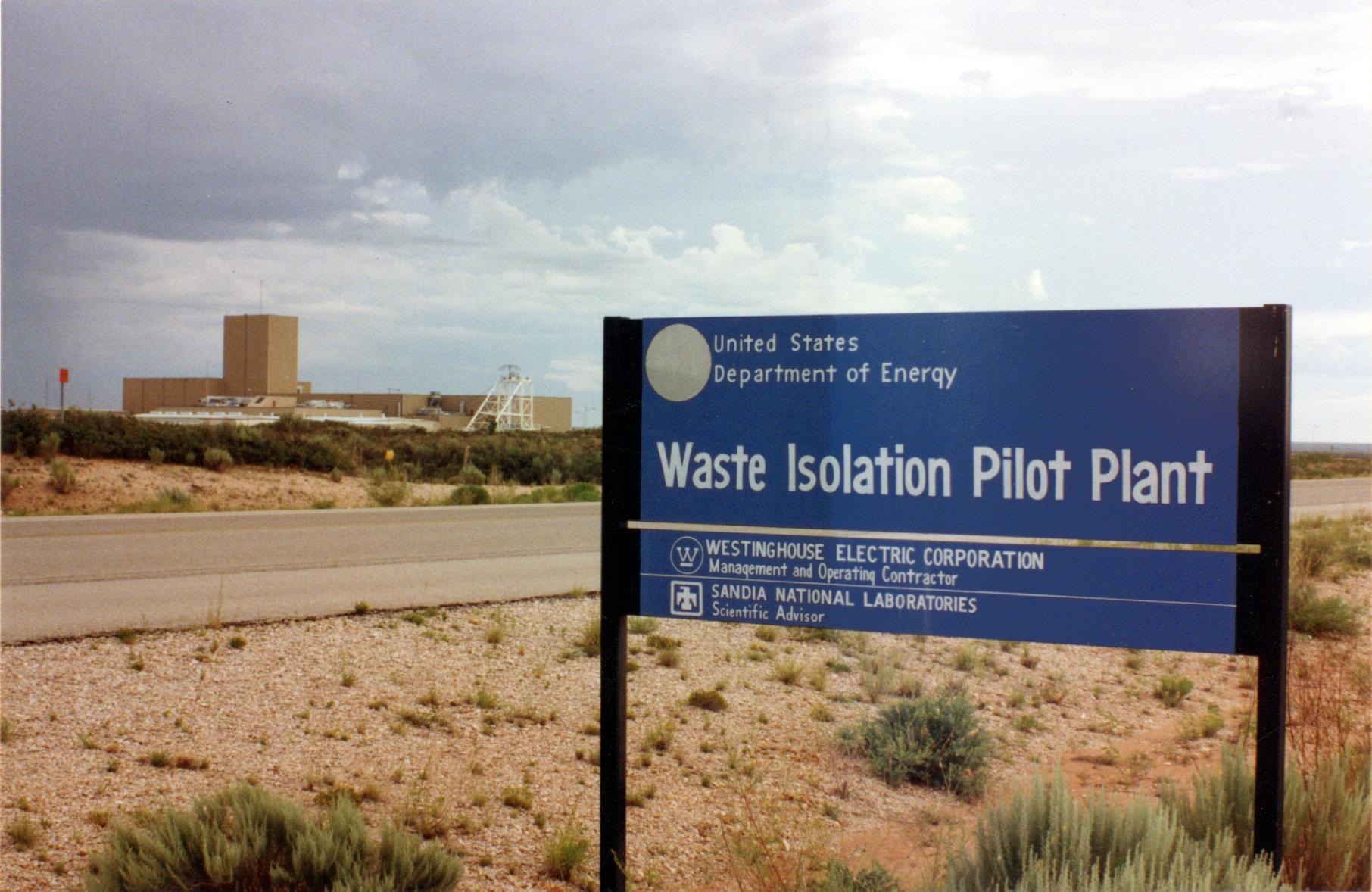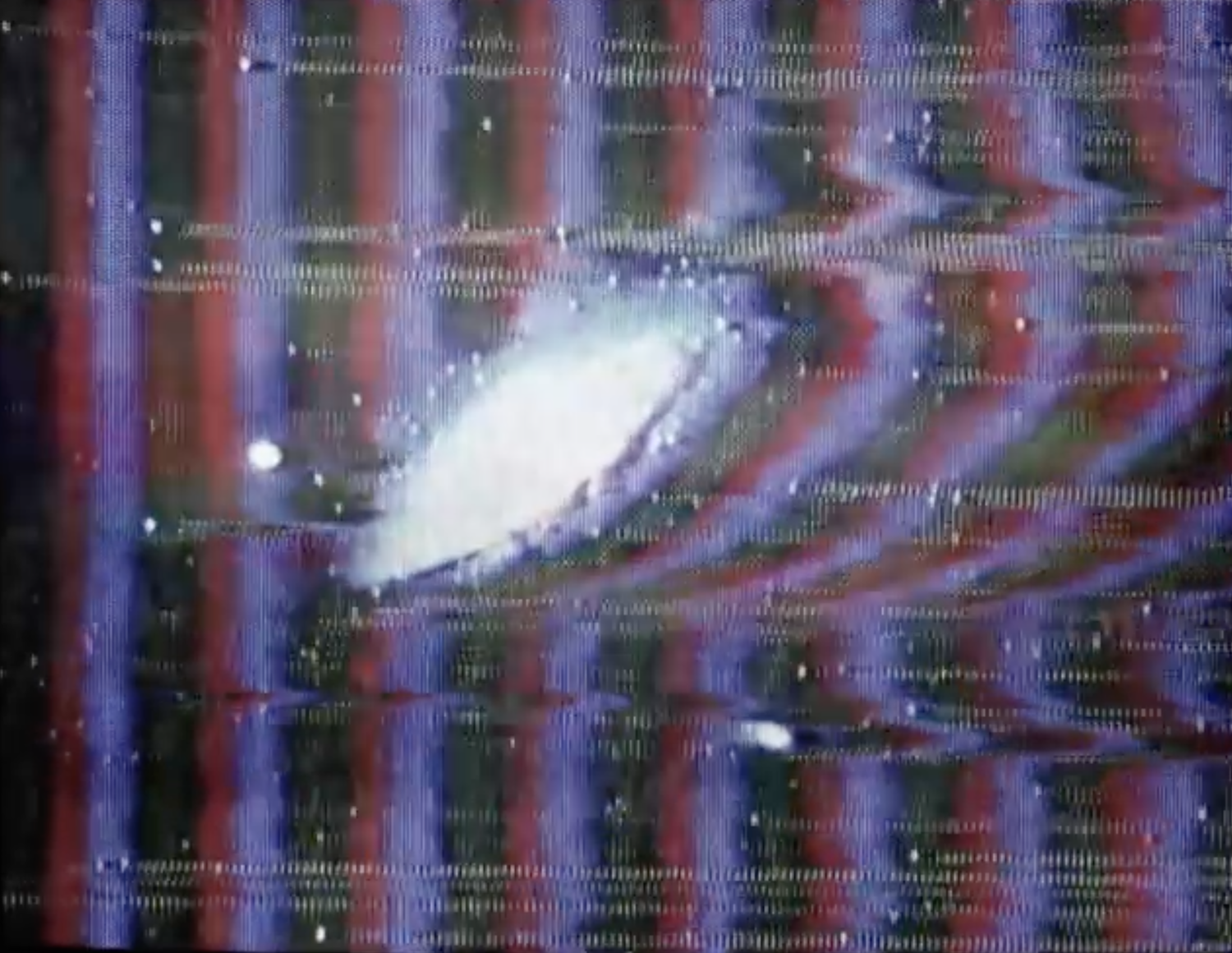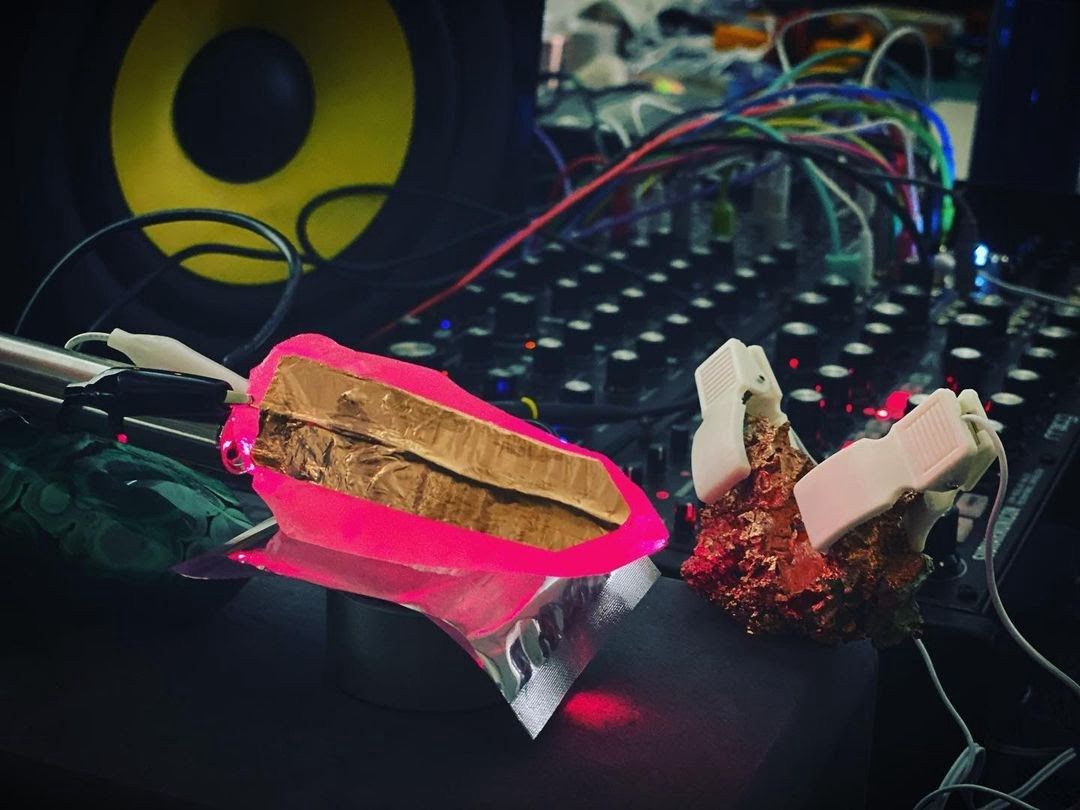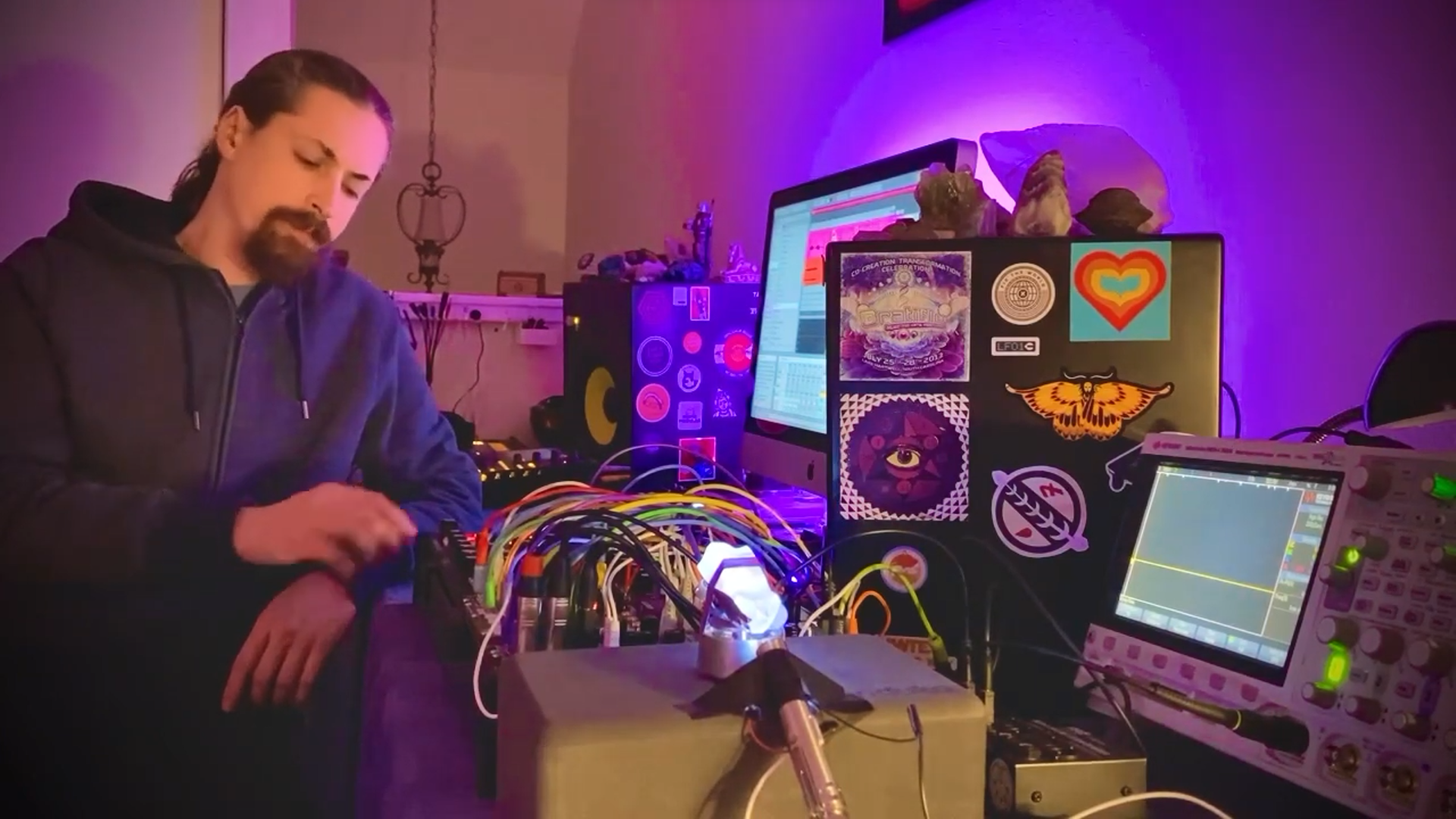Evan “Skytree” Snyder straddles two worlds: by day, he is a robotics engineer. By night, he produces electronic music that drops listeners into lush atmospheres evocative of both the ancient world and distant future.
We had a chance to speak with Snyder about his 02020 album Infraplanetary and his recent experiments with piezoelectric musical synthesis. Both projects ratchet up themes of deep time, inviting listeners to meditate on singing rocks and post-historic correspondences.
Our discussion has been edited for clarity and length.
Long Now: Let’s talk about the lyrics to “Atomic Priest” off Infraplanetary.
An excerpt:
“This is for the humans living ten thousand years from now
With radioactive capsules, thousands of feet underground
Grabbin’ the mic to warn you of these hazardous sites
For those who lack in the sight in the black of the night
The least good that we could do is form an Atomic Priesthood
To keep the future species from going where no one should
We’ve buried the mistakes of past nuclear waste
Hidden underground for future races to face
It’s our task to leave signs for civilization to trace
But who’s to say what language these generations will embrace?
Basic symbols up for vast interpretation
Disasters resulting from grave mistranslation
This is not a place of honor and glory
This is a deep geological nuclear repository
Reaching through millennia to give some education
And preserve the evolution of beings and vegetation.”
These are hip-hop artist Jackson Whalan’s words, but you prompted him to write a fairly specific piece about communicating to the distant future. What motivated you to make this, and how does it fit into the way you consider and communicate deep time concerns in the rest of your work?
Skytree: I really appreciate the opportunity to discuss this with you. “Atomic Priest” is definitely inspired by my lifelong fascination with deep time — specifically its effect on design principles, engineering challenges, and bridging cultures. I’m intrigued by things that endure, how they endure, and why. The simple practice of considering the long-term is uniquely inspiring, and compared to the relative chaos of the present I find some refuge and meditative calm when reflecting on the decamillennial scale.
The long view also shows up in my process as a music producer. Building compositions is a months-long solo endeavor within my audio workstation. It’s an obsessive, detailed, and laborious process, and my reflecting on deeper timescales while composing is reflected in the product. I’m mindful that the end result feels timeless or out of sync with everyday chronology.
Collaboration makes the work less lonely. The lyrics to “Atomic Priest” were indeed written by Jackson. When I sent him the instrumental to record over I already had a title and theme, and included an article describing the unique challenges of the EPA’s Waste Isolation Pilot Plant (WIPP) — an attempt to contain nuclear materials that remain lethal for over 300,000 years. When I first read the article in 02006 I was captivated by the project’s concept sketches of how one might warn unknown future civilizations about nuclear contamination. I then researched the EPA’s Human Interference Task Force and the work of linguist Thomas Sebok, which I also provided to Jackson for reference. I was thrilled with the result. Combining something as contemporary and human as hip-hop with a subject so immense in scale feels very satisfying to me.

Long Now: You’re touching on something that goes deeper than the future-chic aesthetic of many other electronic artists.
Skytree: Futurism has always been an inspiration, but on this album I tried to go a bit deeper with it than just sounds or spaces. I often stepped back and reflected on what it might sound like to someone in the deep future, in the unlikely chance they’d find it. What sort of “message in a bottle” might surprise them, excite them, deviate from what they’d expect to find, or feel like a knowing hand-shake from the past?
This potential for a two-way dialogue between entities separated by eons is one of most tantalizing potentials of thinking in deep time scales. The Voyager craft are of course excellent literal vehicles for this potential — designed in the hopes to one day be found, perhaps light years from our star system and far, far in the future, by intelligences we may never meet or learn of but who realize we intended them to find this message. That is perhaps about as close to a real time machine as we may ever get. I’d like to think this album is the best result I’ve achieved to that end.

Long Now: I want to talk with you more about your current project, linking up piezoelectric sensors to crystals to send CV signals to modular synthesizers. As someone who actually ate Moon dust as a kid, can you please wax philosophical about making music from stones, and what it is about this that stimulates your artistic or scientific imagination?
Skytree: My grandfather was the chief of security at NASA during Apollo, and served there for 25 years. One of his most recognizable accomplishments was that he was personally responsible for safely transporting Moon specimens for public viewing and analysis from the NASA archives to the Smithsonian, where many of them are still on display today. He accompanied them on the last leg of their journey to the public’s eye. As a kid, I remember visiting the Smithsonian with my family and marveling at how he was a small but notable part of that incredible accomplishment.
Shortly thereafter, I took that a step too far and snuck a small taste of his personal sample of Moon dust while he was mowing his lawn. I was 8 years old. I remember carefully observing how long it took him to mow the lawn, when it obstructed his view into his house, where he kept his display case keys in his home office, and noting where the small step stool was that I needed to reach the top shelf. It wasn’t so much out of mischief, though outfoxing NASA’s former chief of security, as a child, on the very artifacts he was dutied to protect…feels pretty funny now. Rather, it was more out of a genuine need to try it. Something in me just had to see if I could eat part of the Moon. I did. It tasted chalky, powdery — about what you’d expect. If he were still alive today I wouldn’t dare share this story. He was a hardass and not someone to cross. (Rest in peace, Grandpa.)
So, my love of rocks goes pretty deep. For years, my artist bio has read, “sounds generated by minerals, plants, animals and artifacts.” This used to be tongue-in-cheek, avoiding genres, but I am now quite literally making sounds generated by minerals and plants, plus my already extensive use of animals and artifacts.
This series of experiments scratches a very particular itch. My favorite areas of any museum have always been geology and mineralogy. I remember staring into displays filled with crystals for so long my parents would have to pull me away — especially if they were interactive, illustrating principles like stratification, fossilization, or piezoelectricity. Ever since learning about the use of piezoelectric resonators and components in everyday electronics like radios and computers, I couldn’t help but wonder…could this same effect be demonstrated on a raw quartz point? It turns out it’s not even that difficult.
Just weeks ago, I found a successful method for turning raw quartz pieces in my collection into surprisingly effective piezoelectric pickups. Though I’d used standard factory-made piezos for years, making vibrations onto the surface of a crystal and hearing them come ringing through my headphones was an absolutely magical moment. All that’s needed is some copper tape, copper wire, the right leads, some amplification and signal processing to remove noise. Two electrodes are taped on opposite faces of the crystal point — one out of three sets of faces tends to work best and provides the greatest voltage output. Some crystals work better than others.

At first I went for the tried-and-true approach of simply whacking on these specimens with a mallet, but I’ve gotten more refined with it. Using a function generator (output from a fancy oscilloscope) and a transducer (effectively a speaker without the cone), I’ve been able to impart specific frequencies onto quartz specimens, find resonant points, and record the resulting audio. Moreover, I’ve been able to use this piezoelectric signal as control voltage for my modular synth. I can’t underscore enough how much excitement and motivation this brings me and how happy I am to share this. There’s something incredible about using relatively unaltered geological specimens, perhaps hundreds of thousands of years old, in a modular synthesizer in 02021. It feels like a very raw and timeless dialogue between my creative self and immense forces of nature.

Long Now: I’m already imagining the crystal keyboard in the dash of Carl Sagan’s Ship of the Imagination, only it’s a Moog.
Skytree: I’ve also been experimenting with using conductive specimens like meteorite and native copper as crude theremin antennae, to send control voltage to synth modules. This is far easier to set up than the piezoelectric experiments, but nonetheless highlights important and useful physical principles of these materials. My next experiments will involve pyrite, which shifts from an insulator to semiconductor to conductor depending on the strength of the magnetic field it’s exposed to. An electromagnet is sitting on my desk and ready to aid my continued explorations of literal rock music. For the time being, I’m calling this process “geosonification” as a nod to using plants in synthesis under the guise of “biosonification.”
It gives me a way to integrate my loves of music and science and make mutually reinforcing discoveries. With music, I often discover more about myself. With science experiments, I discover more about the world. Combining the two, I get both. It keeps me playing and interested. I’m not an exceptionally talented instrumentalist, but this gives me a way to tread new ground using some of the oldest tricks on Earth.
Long Now: Since you mentioned plants, and as far as leaving a record for the future is concerned, we’re having this exchange in the context of the growing popularity of attaching sensors and MIDI converters to plants, and sonifying data in general. Data sonification seems key in the ongoing work of making multiple spatiotemporal scales easier to grasp and work with. And “letting plants speak” in music seems par for the course right now, as the Wood Wide Web becomes a colloquial idea and we collectively grapple with the ideas of personhood for companies or ecosystems operating on vastly different timescales.
Skytree: Yeah, to the point of piezoelectrcity and plants, I have a synth module that turns subtle variations in capacitance from a plant, person or other semiconductor into usable control voltages. My dad has been a huge inspiration with all this. He recently retired after 27 years in the National Park Service as midwest region radio manager. Growing up, there were always electronics around; I was exposed to the fundamentals of these technologies pretty early on and first burned my hand on a soldering iron when I was ten.
One of the most fascinating stories my dad ever told me was about an unexplained vast radio deadzone in National Park land. It turned out that a miles-long row of trees had grown into an old line of forgotten barbed wire fence. This grid of metal wire turned the electrolytic trees into a giant capacitor, which significantly disrupted radio propagation in the entire region. That’s a pretty seamless, unintended, and unexpected blend of nature and technology. It’s also a reminder there really is a hidden dimension of energy running through things, and sometimes you find it by accident.
Long Now: That’s a fine place to end this.
Skytree: Thanks, Michael and Long Now, for your inspiring work, and thank you to all the long-view thinkers out there that share a sense of wonder, awe, and stillness when gazing into the unknowable future.
Learn More:
- Listen to Skytree on Bandcamp & SoundCloud (including science-inspired dinosaur sounds).
- Listen to Skytree on Future Fossils Podcast’s premier episode, debuted at Moogfest 2016.
- Read our three-part series on Music, Time, and Long-term Thinking.
- Read our interview with Melodysheep, whose viral half-hour long video takes viewers on a timelapse journey to the end of the universe.